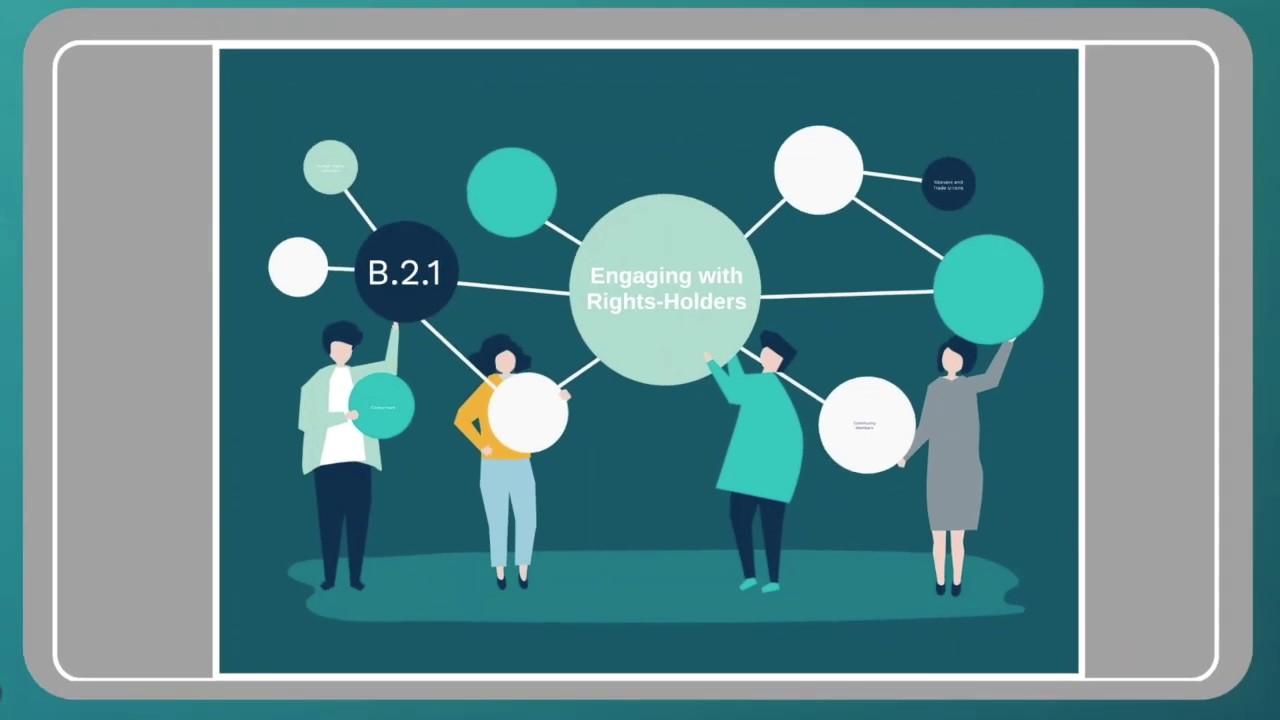Stakeholder engagement
VIDEO: Introduction to stakeholder engagement
Stakeholder engagement needs to be at the core of HRIA, and participation of rights-holders is crucial at all stages of the assessment process.
In the planning and scoping phase, the HRIA team will identify the stakeholders who should be engaged in the process. Some preliminary interviews with stakeholders may also take place.
In the data collection and baseline development phase, interviews with rights-holders, duty-bearers and other relevant parties will be one of the main sources of primary data.
Perspectives of rights-holders themselves will be used for assessing the severity of impacts in the analysing impacts phase.
In the impact mitigation and management phase, stakeholders should be involved in designing and implementing actions that effectively prevent, mitigate and remediate adverse impacts, as well as in monitoring their implementation, potentially through participatory monitoring.
Finally, during the reporting and evaluation phase, stakeholders, especially rights-holders, should be informed about results in a meaningful and accessible way and subsequently engaged in the evaluation process.
In short, ensuring the meaningful participation of those who are affected should be the prerequisite of a process seeking to assess human rights impacts. Participation in the HRIA should enable rights-holders to access information and better understand both the business project or activities and resulting impacts, as well as to learn about their human rights and the respective obligations of duty-bearers to uphold these rights. If carefully done, participation can be a way to empower rights-holders. Lastly, the engagement of duty-bearers and other relevant parties in a HRIA is essential for ensuring a comprehensive assessment and fostering accountability.
The Stakeholder Engagement includes information on:
- Identifying relevant stakeholders to engage with
- Engaging with rights-holders
- Engaging with duty-bearers
- Engaging with other relevant parties
- Vulnerability, marginalisation and discrimination
- Tools and guidance for engaging with specific rights-holders (e.g., indigenous peoples)
Stakeholder engagement practitioner supplement:
- what assessment teams should consider before and during interviews and meetings with stakeholders (see Phase 2)
- the supplement also includes information on stakeholder mapping (see Phase 1) and reporting back to HRIA participants (see Phase 5)
Stakeholder engagement interview guide:
- example questions to assist those conducting interviews for the HRIA
- the supplement includes questions targeted to community members, workers, company management, government representatives and other relevant parties

